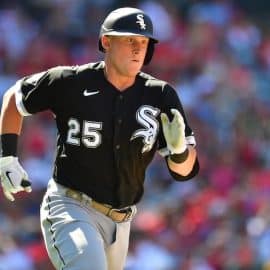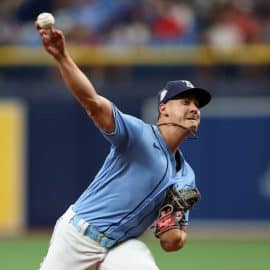A common thing for a team to do with a failed starting pitcher is to move them to the bullpen and test out how they perform as a reliever. In general, it is easier to pitch from a relief role, so plenty of pitchers find newfound success there. For example, there are prospects who move to the bullpen like Josh Hader, and also older pitchers trying to revive their career like Andrew Miller. It’s rare to find pitchers who find as much success as those two did, but if you have the correct fit, you can find a pretty useful reliever from a starter that was thought to not have much of a role before. I decided to set out and find a handful of struggling MLB starting pitchers who would most benefit from being moved to the bullpen. While most pitchers improve in some way, these pitchers could be completely transformed by the new role.
To find pitchers who would benefit the most from a move to the bullpen, I looked for 6 key things amongst starters that Steamer projected to have an ERA over 4.75 in 2019.
1. An injury history
If a starter is unable to stay healthy through 30+ starts in a year, a reduction in workload could help them stay healthy and find better consistency as a result.
2. A fast fastball
It is typically estimated that converting from the starting rotation to the bullpen helps the average pitcher gain 0.8 mph on his fastball. The league’s swinging strike % on fastballs 90 mph or lower does not change much based on throwing a tick faster or slower, but it goes up for anyone 91 mph or higher. Preferably, if a pitcher throws 97 as a starter, they will benefit even more, although that velocity is not very common among struggling starting pitchers
3. A typical reliever’s repertoire
The “typical reliever’s repertoire” being only 2 effective pitches, maybe 3. Usually, when a prospect starting pitcher is moved to the bullpen it is because their changeup is not effective, because you can get away with a combination of just a fastball and slider in the bullpen. I wanted to find pitchers who used their above-average fastball and slider around 70 or 80% of the time but also had a below average third or fourth pitch. If they became a reliever and could use the fastball and slider 95% of the time, they could see big benefits. I specifically looked for a fastball-slider combo because they are 2 pitches that play off each other very well. As a whole, relievers in 2018 threw fastballs an extra 4.5% of the time and 4.1% for sliders. Every other secondary pitch was thrown less often by relievers than starters.
4. Larger than average platoon splits
If a right-handed pitcher struggled to get left-handed batters out, moving to the bullpen should help because rather than the opposing team picking their lineup to match-up well, the manager can sub him in when the upcoming hitters give him the platoon advantage.
5. Command struggles
Another benefit of moving to the bullpen and being able to cut down on the number of pitches is that you can focus on perfecting the command of whatever 2 or 3 pitches you continue to use.
6. First time through the order success
Another downside of starting is that you have to face the same batters multiple times a game, and the numbers get more hitter-friendly each time you go through the order. This affects some pitchers more than others. The average wOBA against starters the first time through the order is .304, so anything lower than that for a struggling starter would point to the bullpen being a good fit.
Add The Sports Daily to your Google News Feed!







